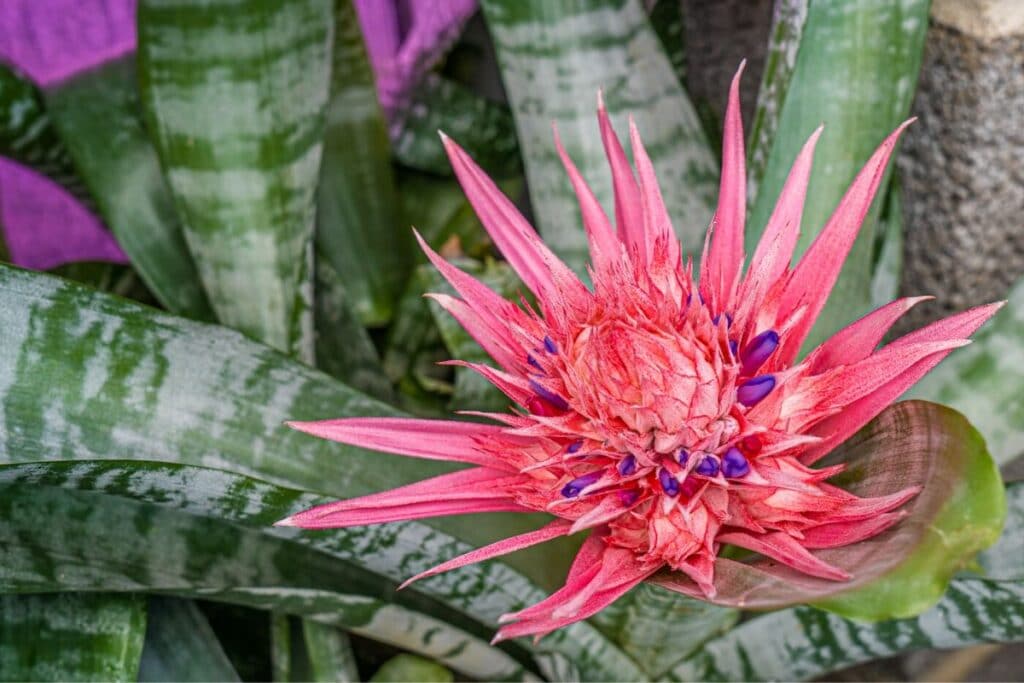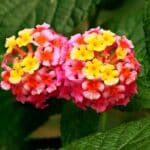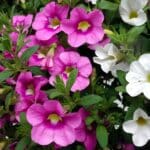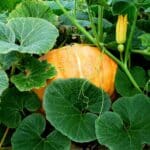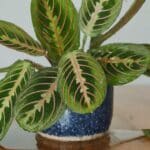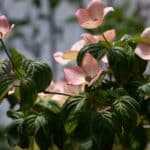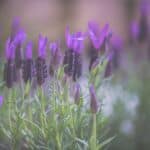Tropical plants are considered as some of the best ones to grow as houseplants, not just because of their adaptability to indoor settings but also because of the unique extravagant flair they bring into a room that no other common house plants possess.
A favorite among these beautiful tropical plants is the Aechmea (also known as urn plant or the silver vase). This large-leafed genus of plants come in exotic color splashes and bear one of a kind blooms that will definitely make any space more interesting and fresher.
Growing Aechmeas indoors is pretty straight-forward and with the right care and condition, they will provide attractive foliage and flowers that are long-lasting.
What is an Urn Plant?
Aechmea is a member of the family, Bromeliaceae. This genus houses over 250 species growing in different tropical and subtropical forests of South America.
Because of the interesting form and growth habit of the plant, it may be the most popularly grown and cultivated of all bromeliads (1).
The name Aechmea was derived from the Greek word for ‘spear’ owing to the stiff, spear-like leaves of the plant. These leaves gather in a basal rosette form with a hollow, cup-shaped center that catches rainwater in the wild for the plant’s moisture supply (2).
This is also the reason why the Aechmea is commonly referred to as the Urn or Silver Vase plant.
What Makes the Urn Plant Unique?
There are several things unique about this ornamental flowering plant. One is Aechmeas don’t have an upper-ground stem and their beauty is predominantly showcased by the spiny-edged foliage that comes in bicolors, striped, mottled, or a combination of these (1).
Second, although they can grow in soil, Aechmeas are epiphytic in nature, growing on other strong and established plants without taking any nourishment from them.
They attach their roots to tree branches for anchorage and also, this position allows them to have access to adequate moisture and filtered sunlight in forests (3).
It takes about 2 years for an urn plant to bloom during spring, its flowers emerge in the middle of the rosette in spike, panicle or raceme form.
The florets come in red, yellow, and blue held by showy bracts and the burst of colors stand out against the evergreen foliage for several months (4).
How To Grow Urn Plants Indoors?
Light and Temperature
Urns, or Aechmea fasciata, grow in bright, indirect light, making them ideal for interior settings with east or west-facing windows. They can withstand some intense morning sunshine but too much direct sunlight may burn their leaves.
Maintain average room temperatures ranging from 60°F to 80°F (15°C to 27°C) throughout the day and slightly lower at night.
Urn plants are cold-sensitive, so avoid exposing them to temperatures below 50°F (10°C). Urn plants benefit with steady, temperate temperatures and bright, indirect light.
Will an Urn Plant Flower Indoors?
The flowering of Aechmeas relies heavily on light levels. The plant generally prefers partial shade so when placed under bright light, the flowers tend to be fully formed but the color is not as vibrant.
There are also varieties that have tall blooms lasting for months and these will need adequate light to maintain the color.
Water and Humidity
Native to tropical forests, urn plant thrives in high humidity and moist surfaces. Rainwater provides the acidity that they need but in an indoor setting, they can be planted in a peat-based mix and sprayed with decalcified water instead (5).
It is important to keep the Aechmea’s growing media only slightly damp because if it is too wet, the crown of the plant may rot. The cup portion of the center of the plant is its natural storage of moisture.
Soil
Urns, or Aechmea fasciata, thrive in a well-draining soil mix specifically formulated for epiphytic bromeliads, mimicking their natural habitat of well-aerated and slightly moist environments. A blend of orchid bark, perlite, and peat moss provides the ideal balance of aeration and moisture retention.
Avoid heavy or compacted soils, as they can lead to waterlogging and root rot. Additionally, incorporate some organic matter to promote healthy root growth and nutrient uptake. Maintain a slightly acidic to neutral soil pH around 5.5 to 6.5.
Regularly check soil moisture levels and water urn plants when the top inch of the soil feels dry to the touch, ensuring proper hydration without creating soggy soil conditions.
Propagate Aechmeas
A potting mix made of equal parts of sphagnum moss, shredded bark, and sand is found to be one of the best growing mediums for Urn plants.
Use balanced liquid fertilizer at half the recommended rate, once during the summer months, when they are placed outdoors to recover (1).
After an Aechmea flowers, the rosette of leaves dies. Several young funnel leaves will develop at the base of the parent plant, sometimes alongside a colorful flower stem. These will eventually form roots and grow into a new plant, known as ‘pups’ that can be potted separately (3).
Instead of growing by seeds, these pups are the most common source of planting materials as they grow and establish faster.
Pests and Diseases
Aphids, leaf miners, and mites are some of the most common pests of bromeliads. A specific type of aphids called rice root aphid, dark green or orange brown in color, attacks the roots of Vase plants causing stunted growth.
Leaf miners are larvae of flies, moths, and beetles that create a tunnel-looking pattern on the surface of the bromeliads’ leaves. Pineapple mites infest Aechmea by sucking out the plant juices through the leaves, which can also cause brown leaf tips and discoloration (2).
Popular Varieties of Aechmea fasciata
Here are some common types of urn plants:
1. Silver Vase (A. trifasciata)
This Urn plant is characterized by its chalky-grey leaves and the violet flowers in between the pyramid-forming pink bracts. The grey color of the funnel is due to the white miniscule scales covering the leaves which disappear when touched, come in contact with water, or when there is not enough light.
Of all Aechmeas, this is the easiest to grow as a houseplant, at room temperature as it can tolerate relatively dry and semi-shaded conditions.
2. Blanchet’s Aechmea (A. blanchetiana)
This species of Aechmea is often found providing a tropical bright vibe to a front yard, in mass planting or in containers and planters. The urn plant grows big, usually up to more than a meter tall.
The funnel is made of attractive orange leaves with red tips. In more shaded areas, the plant is greener but still provides a perfect background to the equally striking panicles of red and yellow flowers. These long lasting flowers are often used as cut flowers with a shelf life of up to 3 weeks.
3. Brazilian Vase (A. distichantha)
One of the easiest vase plants to keep, this Aechmea survives in shaded areas of the garden and thrives well indoors.
The rosette of green to dark-green spiky leaves is looser and in the middle of the plant emerges a tall floral stalk composed of red or pink bracts, each housing delicate purple, blue, or white flowers.
The flowers last for weeks, sometimes months and are very striking when in full bloom against the dark leaves. The plant grows a manageable size so it is perfect when potted but makes an excellent groundcover when grown in a compact mass too.
Other Aechmea species to consider for an indoor setting are:
- Amazon Zebra Plant (A. chantinii)
- Matchstick Bromeliad (A. gamosepala)
- False Tillandsia (A. recurvata)
- Nakedstem Livingase (A. nudicaulis)
- Fendler Bromeliad (A. fendleri)
FAQs
Do urn plants like sun or shade?
Urn plants, such as those in the Aechmea genus, prefer bright, indirect light. They can tolerate some direct sunlight, especially morning sun, but intense afternoon sun can cause leaf burn.
How often do you water urn plants?
Water urn plants thoroughly when the top inch of soil feels dry, typically every 1-2 weeks. Adjust watering frequency based on factors such as temperature, humidity, and pot size, ensuring the soil is evenly moist but not waterlogged.
What is the lifespan of an aechmea?
The lifespan of an Aechmea can vary depending on species, growing conditions, and care provided. Generally, they are long-lived plants, with some species living for several years or more when provided with proper urn plant care. After blooming, individual rosettes may decline, but many Aechmea species produce offsets or pups that continue the plant’s life cycle.
Does the urn plant need to be repotted?
No, you don’t need to repot your urn plant unless it has outgrown its container or you wish to split it into multiple plants. If you opt to repot, use a well-draining potting mix and ensure that the new pot is just slightly bigger than the previous one.
Final thoughts
In conclusion, the urn plant, or Aechmea fasciata, is a stunning bromeliad with unique foliage and vibrant blooms. By following these urn plant care tips, you can ensure your plant thrives and adds a touch of the tropics to your space.
Remember, provide well-draining soil, maintain consistent moisture levels without overwatering, and offer bright, indirect sunlight. With proper care, your urn plant will reward you with its captivating beauty for years to come. Happy urn plant care!
References
Reference List:
(1) Oldenwald, N. & Turner, J. (2006). Identification, Selection, and Use of Souther Plants: For Landscape Design, p. 15. Claitor’s Law Books and Publishing.
(2) Florida Council of Bromeliad Societies. (1995). Bromeliad Pests. [online] Available at: https://www.fcbs.org/articles/BromeliadPests/BromeliadPests.htm
(3) Vermeulen, N. (1999). Encyclopedia of House Plants, p. 183. Taylor & Francis.
(4) University of Florida. (2017). Bromeliad: Aechmea. [online] Available at: https://edis.ifas.ufl.edu/fp015
(5) Goodin, C. (2018). Smartee Plants: A Professional’s Guide to Indoor Plant Care, p. 204-210. C. Dorrance Publishing.
Close
*Photo by Akini/depositphotos

